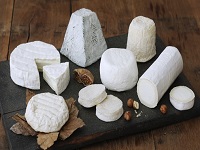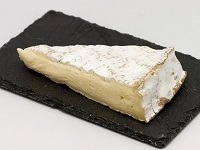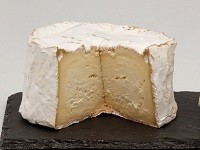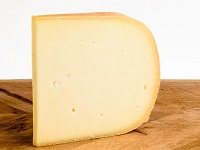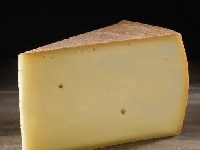Grauburgunder (Austria)
Grauburgunder is an Austrian name for Pinot Gris.
Grauburgunder Flavors
Lemon, Yellow Apple, Melon, Guava, and Apricot are typical Grauburgunder flavors. Accompanied with Plum and White Flowers.
Lemon |
Apple |
Melon |
Guava |
Apricot |
Plum |
Flowers |
Grauburgunder Profile
Grauburgunder is medium light, dry, and crispy:
| SUGAR: | Dry (3 g/l) |
| BODY: | Medium - Light |
| FRUIT: | Medium |
| ACIDITY: | Medium - High |
| Serving temperature: 8-10°C (46-50°F) | |
Grauburgunder Food Pairing
Grauburgunder pairs well with BBQ, Vegetables, and Rich Seafood.
Aperitif |
Salad |
Seafood |
Fish |
Pasta |
Chicken |
Pork |
Soft Cheese |
Excellent Pairings
Vegetarian Burger. Roasted Vegetables.
Asparagus.
Rich Seafood.
BBQ Pork. BBQ Chicken.
The Ideal Glass for Grauburgunder
A Tulip Shaped Glass with a slightly smaller bowl can be suitable for various dry white wines.
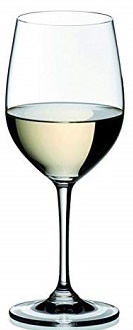
|
The glass guides the wine to the center of your mouth, avoiding the sides where acidity is less pleasant.
A smaller bowl also helps to serve smaller quantities, and keep the wine cold. It also helps if you hold the glass by the stem! |
Grauburgunder Cheese Pairing
Opt for cheeses with moderate saltiness and creaminess to balance the Grauburgunder's acidity.
Also try to add fruits (grapes, apples, pears), nuts (almonds, walnuts), or a light drizzle of honey to enhance the pairing.
Fresh and Mild Cheeses
Goat Cheese (Chèvre): The tanginess complements the subtle fruit notes from the Grauburgunder.
Ricotta: Especially good if served with a drizzle of honey or fresh fruits.
Soft Cheeses
Brie: The creamy texture and mild flavor work beautifully with Grauburgunder.
Camembert: Similar to Brie but with slightly more earthiness.
Fontina: Its nutty, buttery qualities make a good match.
Semi-Soft Cheeses
Gruyère: Mildly nutty and sweet, enhancing the wine's subtlety.
Manchego: A classic Spanish pairing, especially younger Manchego, which is less intense.
Gouda: A young Goudae can add a complementary tang to the Grauburgunder.
If You Like Grauburgunder
You May Also Like:
About Pinot Gris / Grigio
Pinot Gris (Pinot Grigio) originates from Burgundy.
Today it is cultivated primarily in Italy and France (Alsace).
There are primarily three different types of Pinot Gris:
Light, Dry and Crispy (Italian Pinot Grigio and Australian Pinot Grigio).
Off-Dry and Aromatic (French Pinot Gris and Australian Pinot Gris).
Dry and Fruity (Something in between Italian Pinot Grigio and French Pinot Gris).
Pinot Grigio in Italy
Crispy Lemon, Apple, and Pear flavors are typical for Pinot Grigio, with hints of Minerals:
Lemon |
Apple |
Pear |
Flint |
Pinot Grigio is a light and dry white wine, refreshing as a cold glass of lemonade on a hot summer day.
It is one of Italy's most popular white wines.
Pinot Grigio is cultivated many places in Italy, but the most prominent regions are in the northeast:
- Veneto
- Trentino
- Alto Adige
- Friuli-Venezia Giulia
Italian Pinot Grigio and French Pinot Gris use the same grapes, but the Italian wine is dry and crisp while the french is sweeter and more aromatic. The Italian grapes are harvested before they mature to reduce sugar in favor of acid.
Two distinctive style differences occur: fresh and light Italian Pinot Grigio, and rich and powerfull French Pinot Gris.
To retain the fruity and citrusy aromas, Pinot Grigio is fermented in Steel Tanks (not in oak).
The Italian Pinot Grigio is suitable for fish and light chicken dishes.
Pinot Grigio is typically dry with a light to medium body. The wine is often crisp and refreshing with high acidity.
Common characteristics include notes of green apple, pear, citrus (lemon, lime) and sometimes a hint of almond. The flavors are usually straightforward and uncomplicated.
Pinot Grigio is often produced in an easy-drinking style. While it can be high quality, it is usually designed for immediate consumption rather than aging. The best examples can exhibit more complexity and balance, but the majority are enjoyed for their freshness and lightness.
